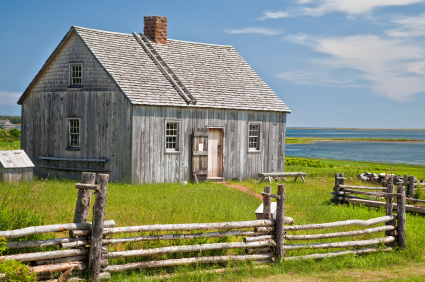A How-To for House Histories
My parents recently moved into a charming house that was built in the 1700s. The previous owners told my parents that the house was built by a town local to be a tavern. That was all of the information they were given about the history of the house.
As genealogists, we spend most of our time researching records that individual people generated during their lifetime, like marriage records and censuses. We often overlook the fact that objects create records as well. Tracing the history of the house you live in can be just as exciting and rewarding as doing your own family history, and uses many of the same sources and research techniques.
There are several places to look to trace the history of your house. Generally, it is a good idea to start with what you know and move backwards from there. Just like in genealogy, living memory is an extremely useful resource that should be taken advantage of. We started by looking at the house itself. The wide plank floors and exposed beam ceilings certainly matched the idea that the house was built around 1800. The previous owners also left a collection of half pint bottles that had been turned up when they were putting their shed in the back. We talked to our neighbors, and found out that the owners of the house across the street believed that their house acted as servant’s quarters for the tavern. When you have gathered all of the information you can from what is around you and your house, it is a good time to start looking for historic documents.
One of the best places to start looking for records is at your local administrative buildings. If your house is old enough, it is likely in the town history sources. Because my parent’s house was one of the first in the area, the local library actually had a 19th century painting of the house hanging on their wall. We were also able to find our house in one of the town histories, and discovered that it was not only the tavern but also the town post office for about 30 years.
Town halls, courthouses, historical societies, and libraries often hold land and property records. If you are lucky, you will be able to find a property abstract for your home, a document that should list all transactions (and all owners) of your property. They are generally held at the county courthouse, and you may have even been given one when you purchased your home.
In my parent’s case, the property abstract was fragmented, and did not go back to the time the house was built. In that case, more digging at local archives will likely be beneficial. Because previous owners and neighbors indicated that the house was a tavern, I went looking for proof. By digging in town records, I was able to find the tavern license that the first owner of the house obtained from the town council to run a tavern and serve alcohol. Building permits are usually at the county court house, or possibly the historical society. In older town records, petitions to build new buildings are often included in the general land surveyor records, and these records will likely give you the dates of construction for the house.
If you are interested in house owners, censuses are a great way to learn about who else has lived in your house. Censuses tie individuals to a specific location, so all you need to do is find your address on the census every ten years to track the people that came through your house.
Whether your house is 20 or 200 years old, there are a lot of places to look to find out what it has been doing since it was built. Decorating your house with photographs, documents, and memorabilia from its past is a fun way of remembering what your house has been a part of. If you enjoy family history, you will likely find property research just as enjoyable!

